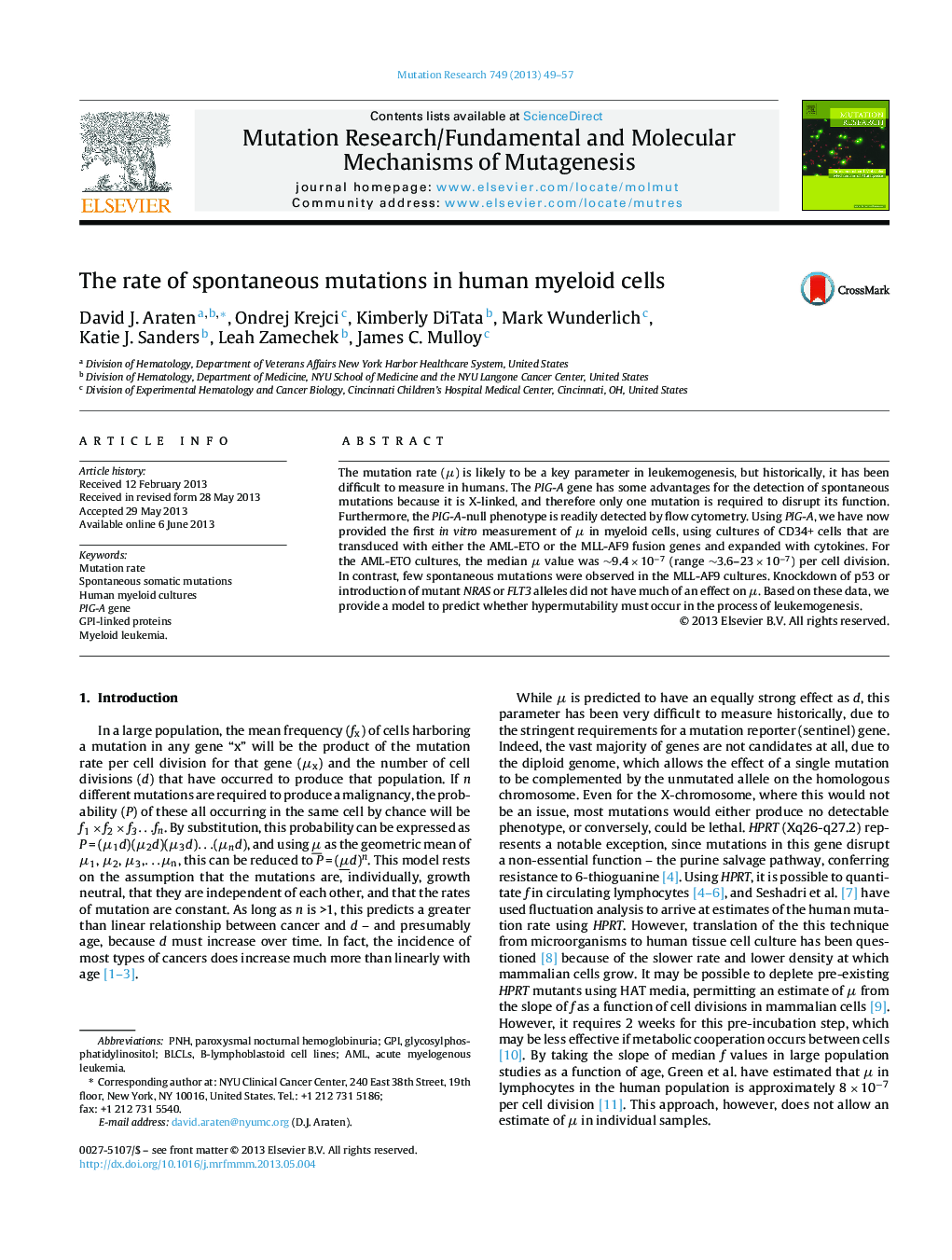| Article ID | Journal | Published Year | Pages | File Type |
|---|---|---|---|---|
| 2146381 | Mutation Research/Fundamental and Molecular Mechanisms of Mutagenesis | 2013 | 9 Pages |
•We provide the first measurement of the mutation rate (μ) in human myeloid cells.•μ is measured to be 3.6–23 × 10−7 per cell division.•The AML-ETO and MLL-AF9 fusions do not seem to increase μ.•Cooperating mutations in NRAS, FLT3 and p53 not seem to increase μ.•Hypermutability may be required to explain leukemogenesis.
The mutation rate (μ) is likely to be a key parameter in leukemogenesis, but historically, it has been difficult to measure in humans. The PIG-A gene has some advantages for the detection of spontaneous mutations because it is X-linked, and therefore only one mutation is required to disrupt its function. Furthermore, the PIG-A-null phenotype is readily detected by flow cytometry. Using PIG-A, we have now provided the first in vitro measurement of μ in myeloid cells, using cultures of CD34+ cells that are transduced with either the AML-ETO or the MLL-AF9 fusion genes and expanded with cytokines. For the AML-ETO cultures, the median μ value was ∼9.4 × 10−7 (range ∼3.6–23 × 10−7) per cell division. In contrast, few spontaneous mutations were observed in the MLL-AF9 cultures. Knockdown of p53 or introduction of mutant NRAS or FLT3 alleles did not have much of an effect on μ. Based on these data, we provide a model to predict whether hypermutability must occur in the process of leukemogenesis.
